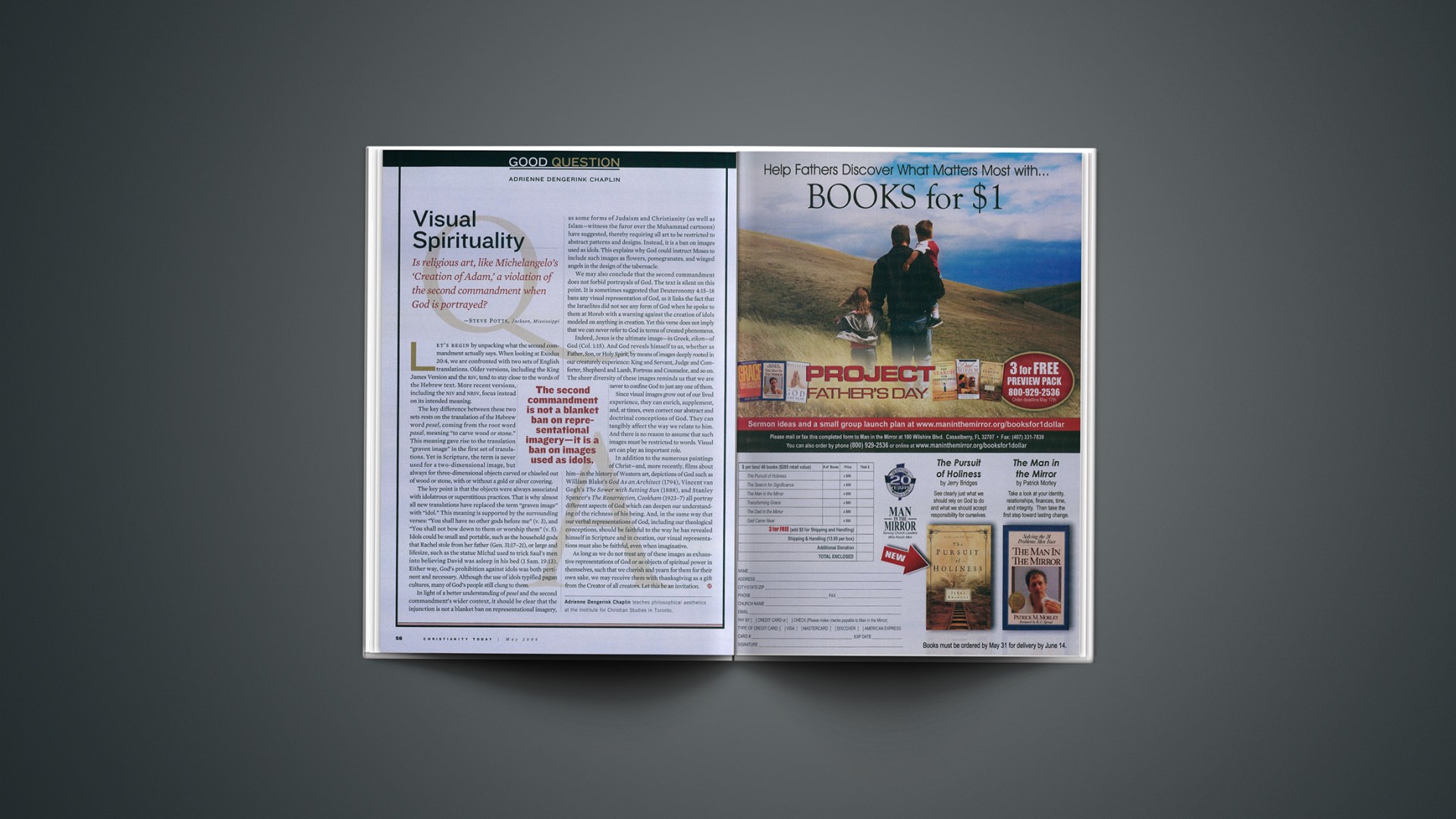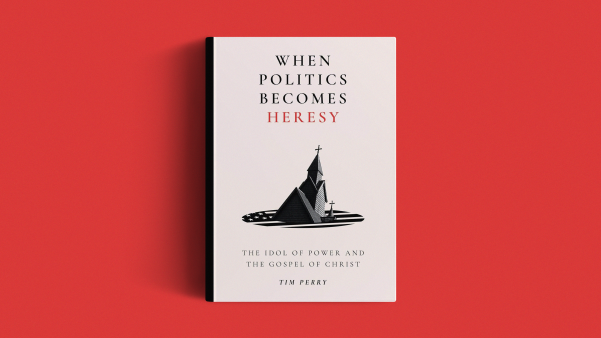Let’s begin by unpacking what the second commandment actually says. When looking at Exodus 20:4, we are confronted with two sets of English translations. Older versions, including the King James Version and the RSV, tend to stay close to the words of the Hebrew text. More recent versions, including the NIV and NRSV, focus instead on its intended meaning.
The key difference between these two sets rests on the translation of the Hebrew word pesel, coming from the root word pasal, meaning “to carve wood or stone.” This meaning gave rise to the translation “graven image” in the first set of translations. Yet in Scripture, the term is never used for a two-dimensional image, but always for three-dimensional objects carved or chiseled out of wood or stone, with or without a gold or silver covering.
The key point is that the objects were always associated with idolatrous or superstitious practices. That is why almost all new translations have replaced the term “graven image” with “idol.” This meaning is supported by the surrounding verses: “You shall have no other gods before me” (v. 3), and “You shall not bow down to them or worship them” (v. 5). Idols could be small and portable, such as the household gods that Rachel stole from her father (Gen. 31:17-21), or large and lifesize, such as the statue Michal used to trick Saul’s men into believing David was asleep in his bed (1 Sam. 19:13). Either way, God’s prohibition against idols was both pertinent and necessary. Although the use of idols typified pagan cultures, many of God’s people still clung to them.
In light of a better understanding of pesel and the second commandment’s wider context, it should be clear that the injunction is not a blanket ban on representational imagery, as some forms of Judaism and Christianity (as well as Islam—witness the furor over the Muhammad cartoons) have suggested, thereby requiring all art to be restricted to abstract patterns and designs. Instead, it is a ban on images used as idols. This explains why God could instruct Moses to include such images as flowers, pomegranates, and winged angels in the design of the tabernacle.
We may also conclude that the second commandment does not forbid portrayals of God. The text is silent on this point. It is sometimes suggested that Deuteronomy 4:15-18 bans any visual representation of God, as it links the fact that the Israelites did not see any form of God when he spoke to them at Horeb with a warning against the creation of idols modeled on anything in creation. Yet this verse does not imply that we can never refer to God in terms of created phenomena.
Indeed, Jesus is the ultimate image—in Greek, eikon—of God (Col. 1:15). And God reveals himself to us, whether as Father, Son, or Holy Spirit, by means of images deeply rooted in our creaturely experience: King and Servant, Judge and Comforter, Shepherd and Lamb, Fortress and Counselor, and so on. The sheer diversity of these images reminds us that we are never to confine God to just any one of them.
Since visual images grow out of our lived experience, they can enrich, supplement, and, at times, even correct our abstract and doctrinal conceptions of God. They can tangibly affect the way we relate to him. And there is no reason to assume that such images must be restricted to words. Visual art can play an important role.
In addition to the numerous paintings of Christ—and, more recently, films about him—in the history of Western art, depictions of God such as William Blake’s God As an Architect (1794), Vincent van Gogh’s The Sower with Setting Sun (1888), and Stanley Spencer’s The Resurrection, Cookham (1923-7) all portray different aspects of God which can deepen our understanding of the richness of his being. And, in the same way that our verbal representations of God, including our theological conceptions, should be faithful to the way he has revealed himself in Scripture and in creation, our visual representations must also be faithful, even when imaginative.
As long as we do not treat any of these images as exhaustive representations of God or as objects of spiritual power in themselves, such that we cherish and yearn for them for their own sake, we may receive them with thanksgiving as a gift from the Creator of all creators. Let this be an invitation.
Adrienne Dengerink Chaplin teaches philosophical aesthetics at the Institute for Christian Studies in Toronto.
Copyright © 2006 Christianity Today. Click for reprint information.
Related Elsewhere:
Passages mentioned in this article are available on this BibleGateway page.
Other Christianity Today articles on the power of images and worship include:
Reformed Protestants No Longer See Images as Idolatrous | The visual and the word go hand in hand as some pastors see possibility in connecting pictures with worship. (Dec. 6, 2004)
Grave Images | The photos from Abu Ghraib have reopened debate on the power of pictures. (June 21, 2004)
Wholly, Wholly, Wholly | Calvinists and conga drums in Grand Rapids: a report from the seventeenth annual Calvin Symposium on Worship and the Arts. (Feb. 02, 2004)
Image Is Everything | The Taliban’s destruction of Buddhist statues is only the latest controversy over the Second Commandment. (April 6, 2001)
Earlier Good Question columns include:
Where is heaven, and how will we experience it before the final resurrection?
Can I forgive those who have betrayed me if they are not repentant?
Are all sins weighed equally, or is one more important than another?
Why is the church against euthanasia in instances where people are in terrible pain?
What harm is there in achieving a higher state of consciousness through meditation?
Will we be vegetarians in the new heaven and earth as Adam and Eve were before the Fall?
Why doesn’t God cure everyone who prays fervently for healing?
What does Genesis mean by man being made in the image of God?
What’s the difference between Christ’s kingdom and paradise?
How is it that not all prayers for the salvation of others are answered?
If God is in us, shouldn’t it be easier to love one another?
Is there a biblical principle behind the punishment of those who break the law?
Won’t heaven’s joy be spoiled by our awareness of unsaved loved ones in hell?
Where exactly do “Oneness” Pentecostals stand in relation to orthodoxy?
Do a man and a woman become married after having sex or after exchanging vows?
Can We Expect God to Forgive Unbelievers Who ‘Don’t Know What They’re Doing’?










